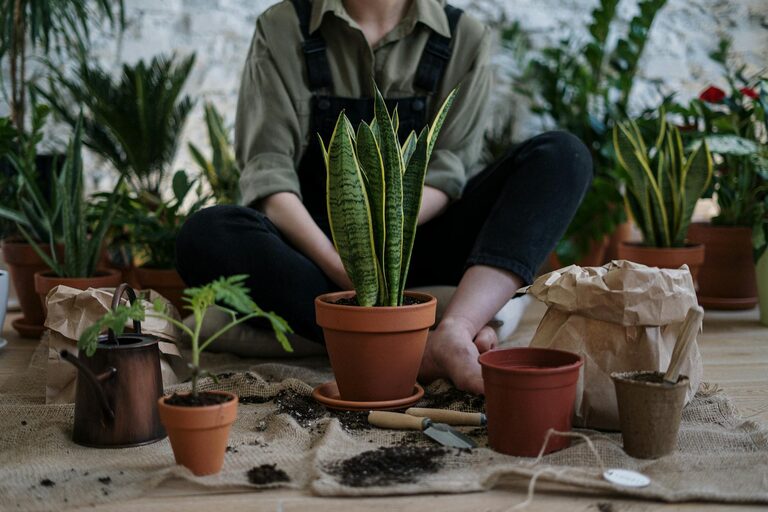Bringing houseplants into your living space is a wonderful way to add life, color, and freshness to your home. While plants can brighten any room, they also require a bit of care to stay healthy and thrive. Whether you’re a seasoned plant parent or just starting out, these practical tips will help you maintain vibrant, thriving houseplants.
Understanding Your Plant's Needs
Every plant is unique and has different care requirements. The first step to keeping your houseplants healthy is understanding their specific needs.
Light
Light is one of the most important factors for plant health. Some plants, like succulents and cacti, prefer bright, direct light. Others, such as ferns and snake plants, thrive in low to medium indirect light. Check the care label or research your plant’s preferred lighting conditions and place it accordingly.
Watering
Overwatering is a common cause of houseplant problems. Plants need water, but too much can lead to root rot. Generally, it’s better to underwater slightly than to overwater.
– Stick your finger into the soil about an inch deep; if it feels dry, it’s time to water.
– Water thoroughly until excess drips out of the drainage holes.
– Avoid letting plants sit in standing water.
Some plants require more frequent watering, while others prefer their soil to dry out completely between watering.
Humidity and Temperature
Many houseplants originate from tropical environments and enjoy higher humidity levels.
– If your home is dry, especially in winter, consider using a humidifier or placing a tray of water near your plants.
– Avoid placing plants near cold drafts, heaters, or air conditioners, as sudden temperature changes can stress them.
Soil and Repotting
Healthy soil provides essential nutrients and supports root growth.
Choosing Soil
Different plants prefer different soil types. For example, succulents need well-draining sandy soil, while ferns prefer moisture-retentive soil rich in organic matter.
Use a potting mix specific to your plant type or amend general potting soil accordingly.
Repotting
Plants may outgrow their pots or exhaust the nutrients in their soil.
– Repot your plants every 1 to 2 years, or when roots start to grow out of the drainage holes.
– Choose a pot one size larger and ensure it has drainage holes.
– Gently loosen the roots and remove old soil before repotting.
Nutrition: Fertilizing Your Plants
Like all living things, houseplants need nutrients to grow well.
– Use a balanced, water-soluble fertilizer during the growing season (spring and summer).
– Follow package instructions carefully to avoid over-fertilizing, which can harm plants.
– Reduce or stop feeding plants in fall and winter when growth slows.
Pruning and Cleaning
Maintaining your plants’ appearance and health includes regular pruning and cleaning.
Pruning
– Remove dead or yellowing leaves to encourage new growth.
– Pinch back leggy stems to promote bushier plants.
– Use clean, sharp scissors or pruning shears to avoid damaging your plant.
Cleaning
Dust can block light and reduce photosynthesis.
– Wipe leaves gently with a damp cloth or sponge.
– For plants with many small leaves, like ferns, give them a gentle shower in the sink or bathtub.
Monitoring for Pests and Diseases
Keeping an eye out for signs of pests or illness is important.
– Common pests include spider mites, aphids, and mealybugs.
– Inspect your plants regularly, especially the undersides of leaves.
– If pests appear, isolate the affected plant and use gentle, natural treatments like insecticidal soap or neem oil.
Healthy plants with proper care are less likely to suffer serious pest or disease problems.
Creating the Right Environment
Beyond essentials like light and water, consider your plant’s overall environment.
Group Plants Together
Plants can benefit from being grouped, as they create a microenvironment with higher humidity.
Rotate Your Plants
Turn your plants every week or two to encourage even growth and prevent them from leaning toward the light source.
Use Quality Pots
Choosing pots with good drainage and appropriate size is key to preventing issues like waterlogging or root crowding.
—
Final Thoughts
Caring for houseplants is a rewarding hobby that improves indoor air quality and brings natural beauty to your home. By understanding your plant’s specific needs and following simple care routines, you can enjoy healthy, flourishing greenery for years to come. Remember, patience and observation are key — plants communicate their needs in subtle ways, and a little attention goes a long way.
Happy planting!

